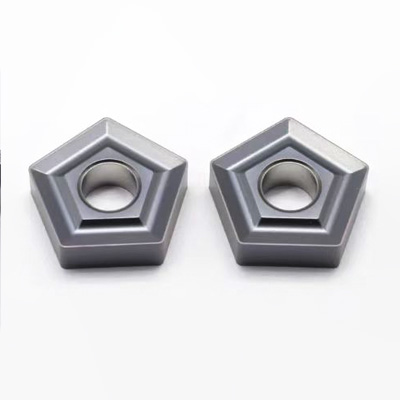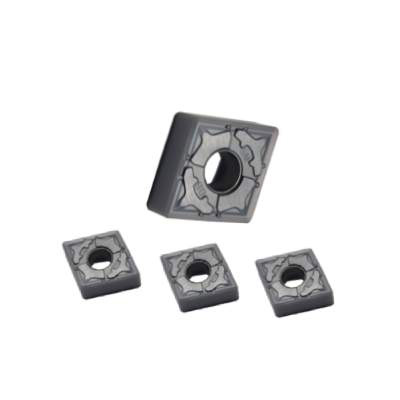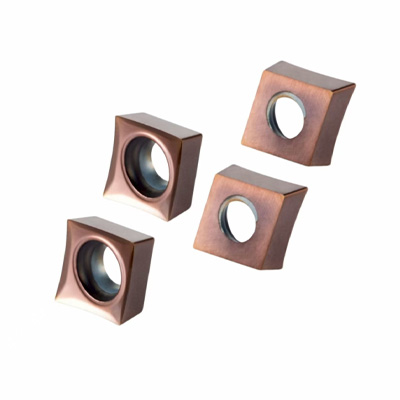
The core of selecting carbide inserts is matching processing requirements, avoiding blind pursuit of parameters or low prices. The following 6 key dimensions will help you steer clear of common traps.
- Core of Pitfall Avoidance: Don’t Blindly Focus on “Material Grade”; Clarify Processing Scenarios First
– Pitfall: Only recognizing general grades like “YT15” and “YG8”, while ignoring specific processed materials (steel, cast iron, stainless steel, aluminum) and working conditions (roughing/finishing, interrupted/continuous cutting).
– Correct Approach:
- First determine the processing object: Choose “Category P” (e.g., ISO P10-P50, containing TiC for wear resistance) for steel processing; “Category K” (e.g., K01.,30, containing Co for impact resistance) for cast iron processing; “Category M” (e.g., M10-M40, balancing wear resistance and chipping resistance) for stainless steel processing.
- Then match the working conditions: Select high Co content (good toughness, anti-chipping) for roughing; choose low Co content + fine grain (high hardness, good precision) for finishing.
- Key to Pitfall Avoidance: Don’t Neglect “Insert Groove Profile”; Avoid Mismatched Cutting Force
– Pitfall: Randomly choosing “general groove profiles”, leading to large cutting vibration and poor chip evacuation (e.g., chip clogging when processing aluminum, chip curling scratching workpieces when processing steel).
– Correct Approach:
– Roughing/interrupted cutting: Select large rake angle and wide groove profile (e.g., “C” type, “W” type) to reduce cutting force and prevent chipping.
– Finishing/continuous cutting: Choose small rake angle and narrow groove profile (e.g., “V” type, “U” type) to ensure stable cutting and improve surface precision.
– Processing materials prone to built-up edge (aluminum, copper): Opt for polished groove profile + large rake angle to reduce built-up edges.
- Focus of Pitfall Avoidance: Be Wary of “Low-Cost Inferior Inserts”; Don’t Be Misled by “Cost-Effectiveness”
– Pitfall: Coveting low prices and purchasing unbranded, unparameterized “white-label inserts”. They seem cheap, but in fact, have short service life (may only be 1/3 of genuine products), poor processing precision, and ultimately increase tool change frequency and scrap rate.
– Correct Approach:
– Prioritize products from brands with clear identification or regular factories, and request material inspection reports.
– Calculate the unit processing cost: Genuine inserts have a higher unit price but longer service life and can process more workpieces, resulting in lower overall cost. (Example: Low-cost inserts cost 10 yuan/piece and process 100 workpieces; genuine inserts cost 30 yuan/piece and process 500 workpieces, with a unit cost of only 0.06 yuan/workpiece for the latter.
- Details of Pitfall Avoidance: Don’t Overlook “Insert Precision”; Avoid Large Errors After Clamping
– Pitfall: Only looking at the insert’s appearance while ignoring precision parameters such as “nose radius” and “insert thickness tolerance”, leading to inaccurate cutting depth and workpiece dimension out-of-tolerance after clamping.


– Correct Approach:
– For finishing: The nose radius error must be ≤ 0.02mm, and the insert thickness tolerance ≤ 0.01mm.
– Inspect the insert surface: No chipping, no scratches, and sharp cutting edges (observable with a magnifying glass). Avoid using “re-ground” old inserts (poor edge strength, prone to chipping).
- Misunderstanding of Pitfall Avoidance: Don’t Superstition “Imported = Better”; Domestic Adaptation Is More Important
– Pitfall: Blindly pursuing imported inserts, believing that “imported products are definitely better than domestic ones”, while ignoring the cost-effectiveness of domestic brands in specific scenarios (e.g., ordinary steel, cast iron roughing).
– Correct Approach:
– For ordinary working conditions (e.g., rough turning of 45# steel, gray cast iron processing): Choose domestic brands, which meet performance requirements and cost only 1/3-2/3 of imported products.
- After-Sales for Pitfall Avoidance: Don’t Only Focus on “Selling Goods”; Prioritize “Technical Support”
– Pitfall: Only discussing prices during purchase without confirming after-sales service. When encountering problems such as “insert chipping and short service life”, suppliers cannot provide solutions (e.g., adjusting cutting parameters, replacing groove profiles).
– Correct Approach:
– Choose suppliers that can provide technical support (e.g., on-site debugging, cutting parameter recommendations, failure analysis)
Turning Inserts:CNMA120404、CNMG160608、DNMG150408、SNMG120408、SNMA120404、TNMG160408、WNMG160412、CCMT09T304、DCMT11T308、SCMT09T304、VBMT110304、TNMX1509L、RNMG120400
Milling Inserts:APMT1135PDER、APMT160408PDER、ADMT11T302ER、TPKT040202R、TPKT060308R、TPKT190608R、ANMX110504PNR、ANKT040202R、LNGU110404ERGE、WNMU050408EN、XNEX080608TR、RPMW08T2MO、RPMT10T3MO、SDMT120512
Drilling Inserts:WCMX030208、SPMG07T308、SPMG110408、TPMT16T312R、R424.9-13T308、TPMX1403-RG、TPMX240512-LG、800-06A、800-08T308H、R800.24-06T308M
